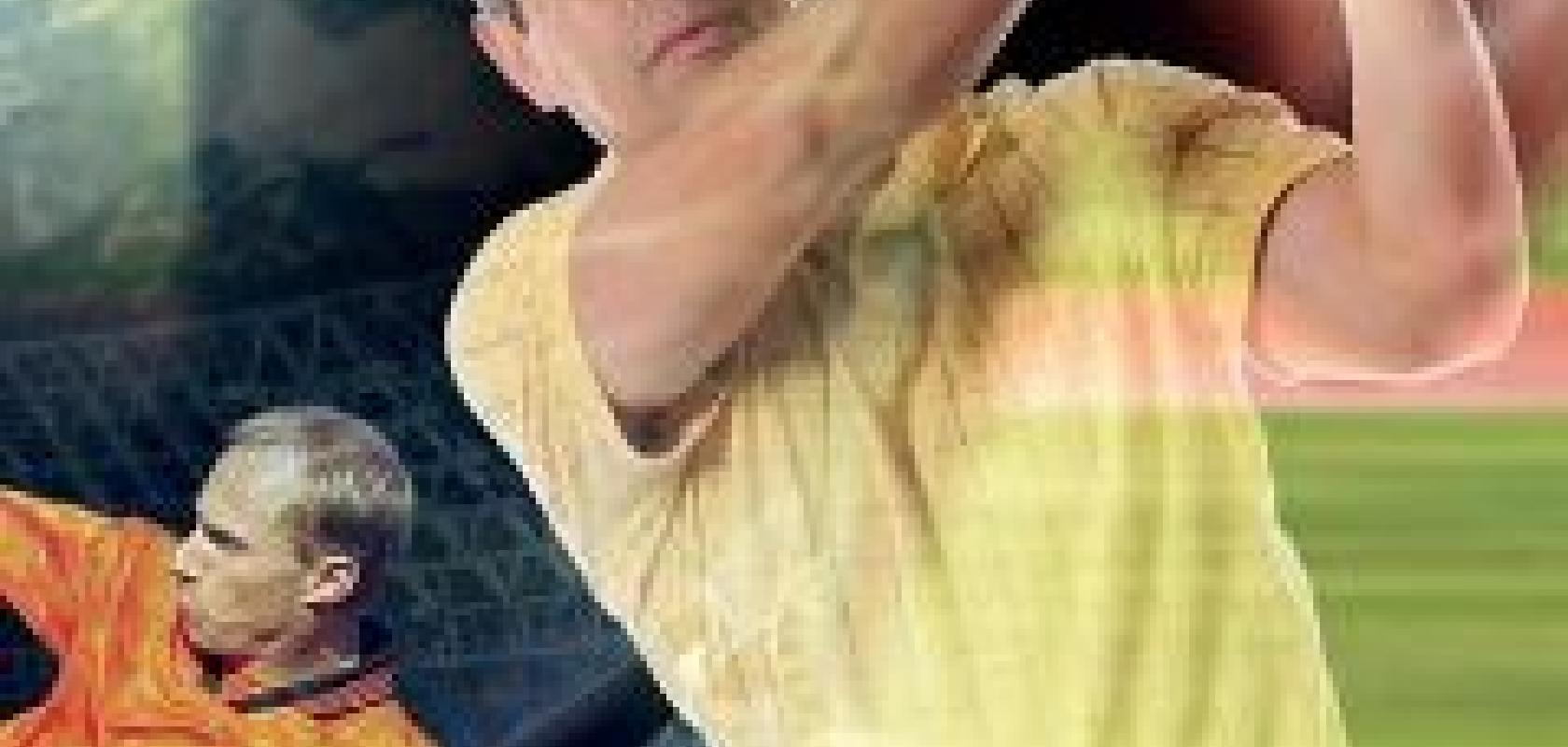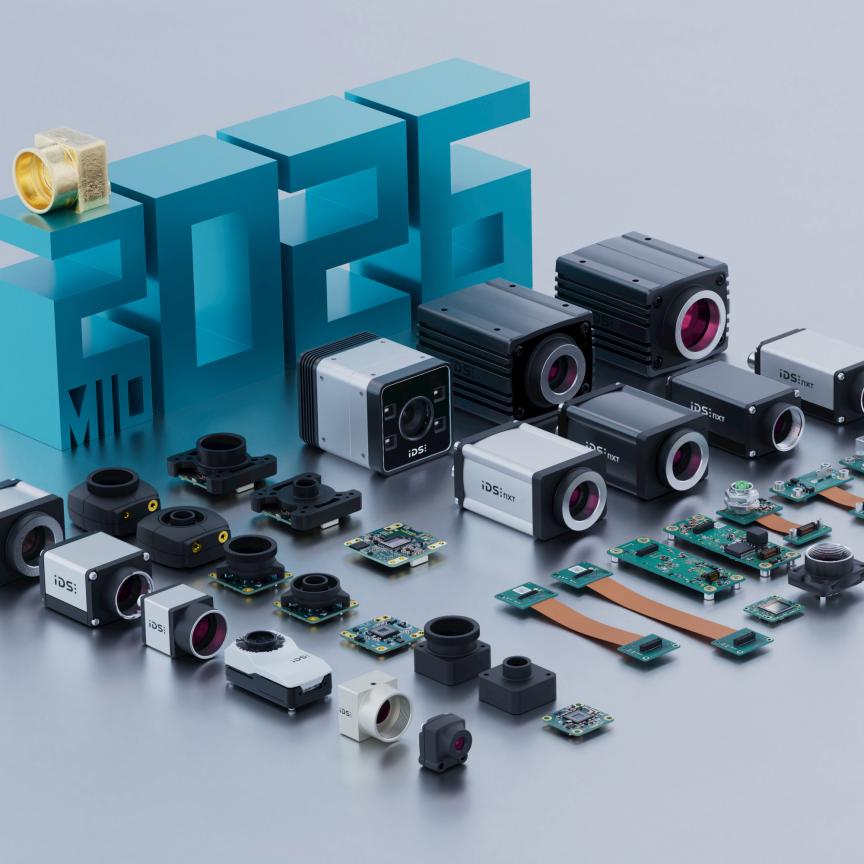Think of sport and dynamic movement comes to mind, but imaging applications vary from the static to the swift. One camera is generally not enough, even for still photography of the athletic form, and the trend with sports imaging is multiple cameras, networked with computers and the possible use of a laser.
At the static end of the sporty imaging range is 4DDynamics and its work capturing 3D swimsuit images. Combined with 4DDynamics proprietary technology, Sony machine vision cameras capture several high resolution images in 0.2 seconds to enable a more accurate fitting of swimsuits for athletes looking to obtain a hydrodynamic advantage. 4DDynamics’ proprietary technology involves algorithms that process the output from one to six vision cameras and convert those images into an accurate 3D dataset, which can be measured and rotated through 360 degrees.
For swimsuit imaging, four cameras have been used with four projectors and computers. 4DDynamics uses laptop computers attached to cameras with a wired connection. Each camera links to a projector and laptop; one of the laptops controls the other three computers and all the cameras though a wireless network. The long-term trend 4D’s chief executive officer, Denise Grauzinis, sees is vision systems that take up less space and cost less. Other applications the 4DDynamics 3D systems have been used for include Lazer brand cycling helmets and the scanning of runners’ feet so they can have shoes that fit them perfectly.
Grauzinis explains that cameras were preferable to laser scanning because laser systems were too slow, taking up to two seconds to take a scan. Their light is reflected in many directions, which also diminishes the result. Cameras, however, take just 0.2 seconds and can capture enough data for a shape’s texture to be recreated. Ten years of imaging system research and development has convinced Grauzinis that lasers are not the solution for this market segment.
Grauzinis explains that, while imaging technology was expensive and only organisations and professional sports people could afford it, now the public can find such services in Madrid and Dubai. ‘You can go into a scanning shop and leave with your 3D data. You will soon be able to take this data…[and] use it elsewhere for clothing and sports equipment,’ he says. Grauzinis expects it will take a few more years before it is widely available in high street stores.
Off-piste imaging
Vision technology is also used to inspect skis as they travel down a production conveyor. The skis travel at 250mm per second and are imaged 500 times to check the quality of the underside surface.
The technology that takes those 500 shots was invented in part by Thor Vollset, chief executive officer and founder of Tordivel. Vollset is the inventor and architect behind his company’s Scorpion Vision Software. Scorpion is an open and independent software solution for industrial vision systems; the first hardware product is the Scorpion 3D Stinger camera, which is being used by Norwegian ski manufacturer Madshus. The camera system consists of the Scorpion Vision Software 9.0, an industrial Quad Core PC, one Sony V60 GigE camera and a Global Laser three line laser. The Scorpion 3D Stinger camera system is being used by Madshus for ski base grinding inspection.

Tordivel’s system for surface inspection of the underside of skis
For smooth skiing, skis’ undersides are ground using grinding machines to a surface quality tolerance that cannot be seen. To ensure the underside surface meets requirements, 100 per cent inline inspection is carried out. The inspection is a pass or fail test. The imaging unit is mounted underneath the conveyor, looking up at the ski base moving on the conveyer at 250mm/s. Each ski has 500 pictures taken of it during the two to three seconds it takes for the ski to pass over the sensor. The system itself detects when a new ski is entering and leaving the measurement zone. The pictures are taken by the Sony V60 GigE cameras that image the reflections of a three line laser that is shone across the ski’s surface. The sub-pixel resolution is 10μm and the system detects the smallest grinding variations in the base.
Golf swing analysis
Imaging golf swings and tennis serves are applications for a technology that the University of Malta has commissioned Oxford University technology transfer company, Isis Innovation, to help commercialise.
A spin-out from the European Union high speed camera synchronisation research project Sensation, the project is being led by Marc Azzopardi. ‘Initially the cameras were intended for eye blink and motion analysis of a person driving a vehicle. That was the starting point.’
A researcher in the university’s department of electronic systems engineering, he explains that the synchronisation method can be used for taking simultaneous digital snap-shots of an object or event from eight or more different angles with synchronisation errors of less than 100ps.
Each camera is treated independently, but the output is then combined and transmitted as a composite frame, mimicking a multi-tap camera. High synchronisation is achieved at the pixel, line, and frame level with little skew from each camera. The method is not limited by the frame rate and has been demonstrated at several hundred hertz. Immediately upon capture, the images can be transferred over a single standard serial cable and recovered at the output with zero loss in synchronisation.
For these bold claims, Azzopardi explains how the researchers analysed the technology’s capabilities: ‘The way we actually demonstrated performance was by using laser scanners. You have a laser beam scanning back and forth at very high speed off a polygon mirror rotating at several tens of thousands of times per minute and you image that and demonstrate performance that way. It is very accurately controlled.’

4DDynamics’ four camera system uses Sony machine vision cameras to capture several high resolution images. It has been used by swimmers to improve the fit of their swimsuits
A company using existing technology for golf swing analysis is Quintic. Quintic uses Stemmer Imaging equipment. Stemmer group manager Chris Pitt says: ‘Quintic provides a service to golf professionals to analyse golf swings using the latest imaging technology. We got involved 18 months ago.’ The company’s involvement was initially to supply high speed cameras that could operate outdoors and be portable. Now Stemmer provides very high-speed, high-resolution cameras including bespoke vision software for multi-camera capture systems. Pitt describes Stemmer’s relationship with Quintic as ‘ongoing’, and that new developments with faster higher resolution cameras is where their cooperation was heading.
Track and field
While golf and tennis swings involve up-close analysis, another application is taking a ‘fieldwide’ approach to analysis using imaging technology. The £2.9 million UK Engineering and Physical Sciences Research Council project Sensing for Sport and Managed Exercise (SESAME) used cameras in tests at Cardiff’s indoor arena. The cameras were cheap web cams and they were placed in the arena’s roof. Looking down they were used for a variety of purposes including tracking athletes.
Dr Joan Lasenby is a Royal Society research fellow working in the signal processing group at the University of Cambridge’s department of engineering. A SESAME participant, Lasenby says: ‘We had a snazzy camera system set up: small cameras in the roof… that would track things roughly, that would pick out things like someone running around the track and then send a message to the high-speed pan tilt cameras that could actually zoom in on somebody.’
That somebody could be a hurdler. The high resolution images from multiple cameras would enable researchers to study the hurdler’s technique. How people run round bends is also an area of analysis. Because the web cams linked to computers can track people, the teamwork of players could also be monitored – a potential use for team coaches. SESAME has finished, but Lasenby explains that work is continuing at Cardiff.
Faster than the eye can see
Finally, at the faster end of the sports imaging spectrum are ball-tracking systems, such as Hawk-Eye, which uses several calibrated cameras to triangulate the position of the ball. A spokesman for Sony, which purchased Hawk-Eye earlier this year, says: ‘Hawk-Eye’s capabilities, based on vision processing and triangulation, coupled with Sony’s established leadership in audio visual production and business to business solutions will enable the delivery of leading managed services and innovative solutions for sports stadia and broadcasters.’
The Hawk-Eye system used in cricket features six high-speed calibrated cameras positioned around the ground. When a ball is bowled, the system automatically locates the ball within each frame of video from each camera in order to calculate the 3D position of the ball. In addition, by measuring the position of the ball at multiple frames after it has bounced, the speed, direction of travel, swing and dip can be calculated, which allows the future path of the ball to be predicted – useful in the analysis of leg before wicket decisions. Hawk-Eye is also developing a system for football.
Standing still or on a high-speed trajectory, imaging using multiple cameras is becoming increasingly popular with sport. Whether it’s a ball’s location in time and space or tracking a team of players as they cooperate on the pitch, measuring performance in this way will give players a winning advantage.


